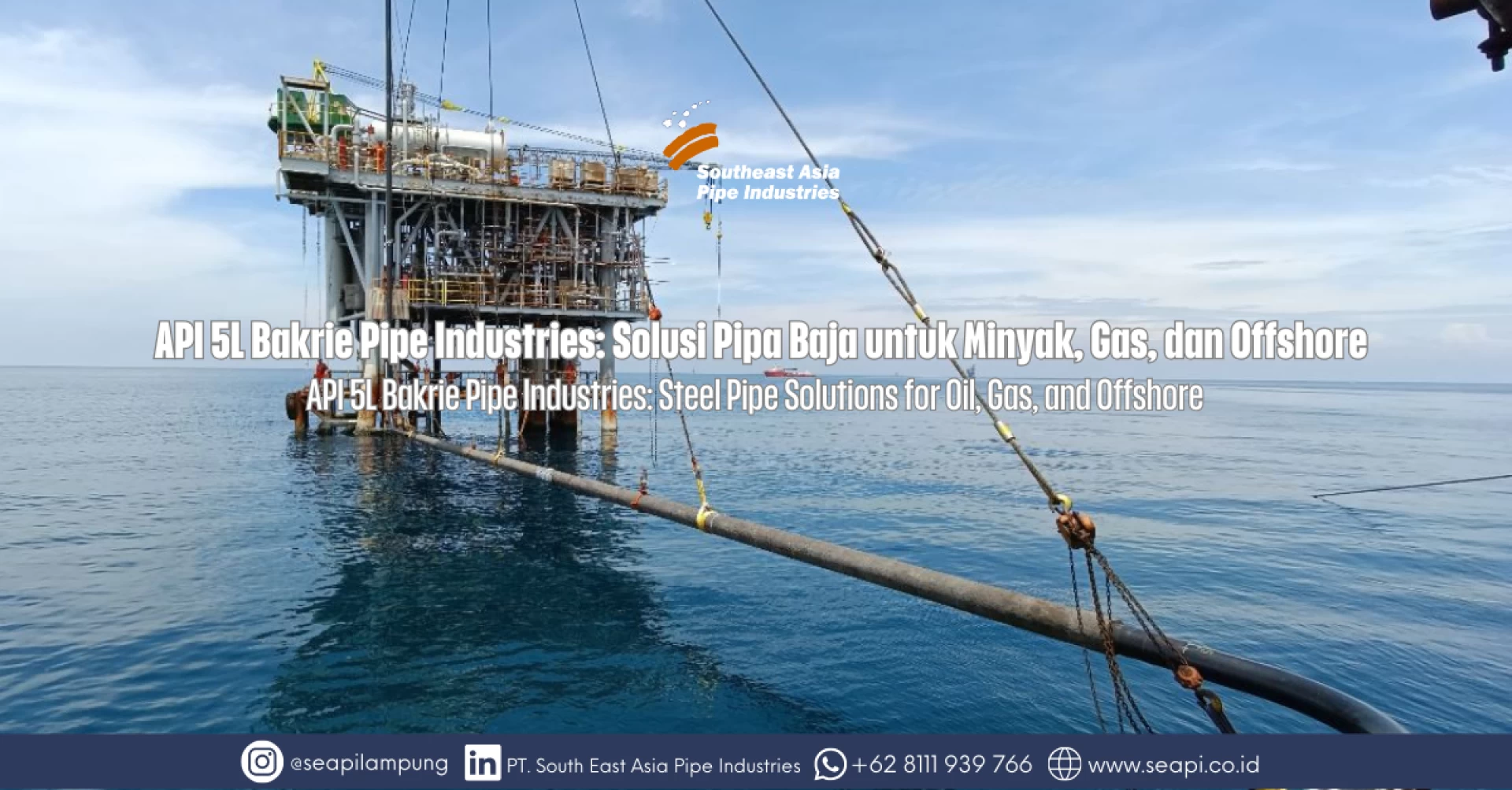Hello Pipe Enthusiasts!
This concise article explains what API 5L is, the difference between PSL1 and PSL2, grade options, and adds Southeast Asia Pipe Industries (SEAPI) technical advantages including the three complete welding methods we apply to meet oil and gas project requirements.
What is API 5L
API 5L is an international specification for line pipe used in the transportation of oil, gas, and high‑pressure fluids; the standard sets requirements for material, mechanical properties, dimensions, and testing to ensure pipe performance under heavy operating conditions and corrosive environments.
Difference between PSL1 and PSL2
PSL stands for Product Specification Level, the product specification tier in the API 5L standard for line pipe. PSL1 provides basic requirements and is suitable for general applications with relatively low risk, while PSL2 imposes stricter quality control and testing, including toughness testing and additional non‑destructive examinations, making it more recommended for long‑distance transmission, offshore service, and extreme conditions.
Grade Classes
API 5L pipe is available in various strength classes designated by X Grade or L Grade. Each indicates the minimum yield strength in megapascals (MPa) or kilopounds per square inch (ksi), which is the main reference in pressure piping design.
- B or L245 → minimum yield strength 245 MPa
- X42 or L290 → 290 MPa
- X46 or L320 → 320 MPa
- X52 or L390 → 390 MPa
- X60 or L415 → 415 MPa
- X65 or L450 → 450 MPa
- X70 or L485 → 485 MPa
The X code is more commonly used in industry practice, while the L code (Line Pipe) is the formal notation in technical documents and API 5L certification. Both refer to the same grades, differing only in notation.
Sufix Grade and Delivery Conditions
M: indicates the pipe is produced by thermomechanical controlled processing (TMCP) or thermomechanical rolling to achieve a better combination of strength and toughness without final heat treatment; MS: denotes the M condition combined with a modifier for sour service suitability, meaning material and testing are adjusted for resistance to H2S‑containing environments; MO: indicates the M condition with additional modifications/requirements for offshore service or special installation conditions, which typically require extra testing and documentation to ensure service suitability.
How to Choose the Right Grade
Consider the following when selecting a grade:
- Operating and design pressure: higher pressure requires higher grade.
- Safety factors and corrosion: projects in corrosive or low‑temperature environments typically choose higher grades and PSL2.
- Cost efficiency: higher grades provide greater strength but affect material cost and fabrication processes.
- Project specifications and client standards: ensure the selected grade complies with tender documents, international standards, and audit requirements.
Complete Welding Methods at SEAPI
Southeast Asia Pipe Industries applies three main welding methods to meet diameter, thickness, and field application needs:
- HFW / ERW (High Frequency Welding / Electric Resistance Welding) → efficient for small to medium diameter pipes with stable, automated welding suitable for distribution and utility applications.
- LSAW (Longitudinal Submerged Arc Welding) → ideal for large‑diameter pipes and transmission applications; offers good geometric control and consistent weld quality for high‑pressure service.
- HSAW / SSAW (Helical / Spiral Submerged Arc Welding) → flexible for producing large‑diameter pipes with material efficiency; economical choice for large infrastructure projects requiring continuous pipe lengths. Each method is supported by documented welding procedures, NDT testing (UT, RT), and dimensional control to ensure compliance with project specifications.
Southeast Asia Pipe Industries (SEAPI) Advantages for API 5L
- Certification and Compliance: our production follows strict quality practices and complete documentation to support RFQ requirements and project handover.
- Comprehensive Test Suite: includes mechanical, chemical, NDT, and hydrostatic testing documented for each production batch.
- Full Specification Options: we offer PSL1 and PSL2 as well as relevant grades for distribution, transmission, and offshore applications.
- Project Technical Support: SEAPI engineering team assists in grade selection, welding procedure determination, and preparation of Mill Test Reports and NDT documentation for compliance and warranty purposes.
- Additional Protection Options: Southeast Asia Pipe Industries has decades of experience and offers supplementary coating options to enhance corrosion resistance and service life, including Fusion Bonded Epoxy (FBE), Three‑Layer Polyethylene Coating (3LPE), Three‑Layer Polypropylene Coating (3LPP), Concrete Weight Coating (CWC), and Neoprene Coating.
Closing and Call to Action
Choosing API 5L certified pipe means selecting safety, reliability, and easier tender compliance. Southeast Asia Pipe Industries provides complete API 5L solutions, from PSL and suffix selection to three comprehensive welding methods (HFW/ERW, LSAW, HSAW), accompanied by testing documentation that meets project standards.
If you want grade recommendations, welding specifications, or a tailored RFQ, send your project requirements and the SEAPI Marketing & Sales team will prepare the best technical and commercial proposal.
